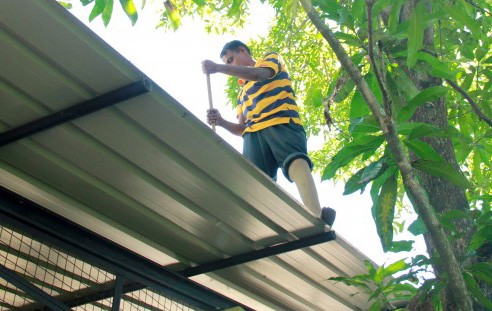You are viewing:
Archived Content
Information released online before January, 2021.
You are viewing:
Information released online before January, 2021.
Note: Content in this archive site is NOT UPDATED, and external links may not function. External links to other Internet sites should not be construed as an endorsement of the views contained therein.
You are entering the 2017-2020 Archive for the
United States Agency for International Development web site.
If you are looking for current information, visit www.usaid.gov.

Comfortable, durable, affordable prosthetics allow laborers to continue their work, giving them “a second chance to live.”
Forty-five-year-old P.W.R. Palipana’s dreams crumbled before his eyes just like the bicycle he was riding when a lorry collided with him on his way home from work in the central hills of Sri Lanka.
A mason by profession and the sole breadwinner of a family of five, he agonized about his lost leg, livelihood and mobility. That was in 2007.
Ten years later his life is back on track, both professionally and personally, since he braved the steep climb to one of Sri Lanka’s tallest mountains without any assistance. “This shows that the artificial foot I am wearing is hard, durable and is able to cope with any distance and hard terrain. It is also far more flexible, lighter and comfortable than the pieces I used before,” says Palipana.
After the accident, a relative introduced him to the Center for Handicapped (CFH) in the central district of Kandy. Established in 1971 as a nonprofit, the center provides rehabilitation services for people with physical disabilities and amputees with support from national, international and non-governmental organizations and private sponsors.
Comment
Make a general inquiry or suggest an improvement.